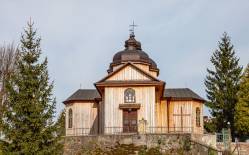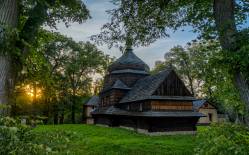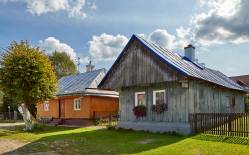One of the most valuable museums of wooden architecture and rural culture in Europe is the open-air Ethnographic Park of the Museum of Folk Architecture in Sanok. It comprises an area of 38 hectares, with over 180 landmarks displayed in a few sectors related to the ethnic groups of Boyko, Lemko and Dolinianie (valley dwellers) as well as Eastern and Western Pogórzanie (foothill dwellers), and in expositions depicting Galician Town Square and history of oil industry in Galicia.
The Galician Town Square features replicas of wooden houses from various small towns in the Podkarpackie region. Inside all of these we can see furniture and items which were used by our ancestors living more than one hundred years ago. The houses become alive owing to work performed by enthusiasts and local craftsmen. At the edge of this sector, along the road leading towards other displays visitors can see a replica of a wooden 18th century synagogue from Połaniec. A tiny Gypsy cottage sits at the cross-roads.
The particularly valuable attractions here include three eastern-style churches: the tserkva from Grąziowa built in 1731, Łemko-style tserkva from Ropki from 1801, and Greek-Catholic tserkva-shrine from Rosolin dating from 1750. The tserkva from Grąziowa was brought here from an area within the Przemyśl Foothills but it is displayed in the Bojko sector. This is because its archaic architecture is similar to that found in many Western Bojko style churches in the past existing in the Polish part of the Bieszczady mountains.
Of particular notice are also the church of St. Nicholas the Wonderworker from 1667, originally in Bączal Dolny near Jasło, on display in the Eastern Pogórzanie sector, as well as a manor house from Święcany built in 1861, on display in the Western Pogórzanie sector.
Photos: Dorota Gmiterek, Beata Prowadzisz, Katarzyna Gerula, Honorata Stanisz, Mirosław Pruchnicki, Krystian Kłysewicz
Gallery
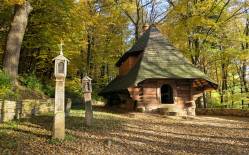
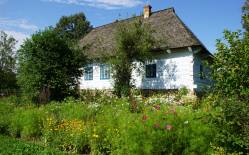
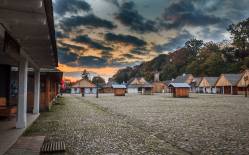
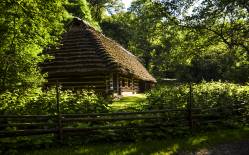
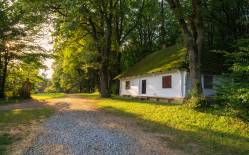

Recommended venues on the Trail



This website has been modernized with the financial support of the European Union under the Cross-Border Cooperation Programme Poland-Belarus-Ukraine 2014-2020. The responsibility for its content lies solely with the Podkarpackie Regional Tourism Board and cannot, in any case, be treated as a reflection of the position of the European Union, the Managing Authority, or the Joint Technical Secretariat of the Cross-Border Cooperation Programme Poland-Belarus-Ukraine 2014-2020.










